📞+86 153 7530 2641 📧 hongjing.Wang@feichuncables.com

Heavy-Duty Crane Pendant Cable for Ship Unloader Festoon Systems – UV-Resistant Power Supply Cable for Marine Port Cranes
Robust heavy-duty crane pendant cable for ship unloader festoon systems. UV, oil, and weather-resistant design for reliable marine port crane power supply.
hongjing.Wang@Feichun
7/25/20259 min read
Introduction: Powering Modern Ship Unloaders
In the demanding environment of modern maritime ports, ship unloader operations depend heavily on sophisticated festoon wire systems that ensure continuous power supply to moving crane components. These systems form the electrical backbone of port operations, enabling the smooth transfer of cargo from vessels to shore facilities. The success of these operations hinges on one critical component: the crane pendant cable.
Ship unloader festoon systems face unique challenges in marine environments, where equipment must withstand constant exposure to salt spray, UV radiation, mechanical stress, and extreme weather conditions. Traditional static cables simply cannot meet the rigorous demands of these dynamic applications, where cables must flex thousands of times daily while maintaining reliable electrical connections. This is where specialized heavy-duty crane pendant cables become indispensable, providing the durability and flexibility essential for uninterrupted port operations.


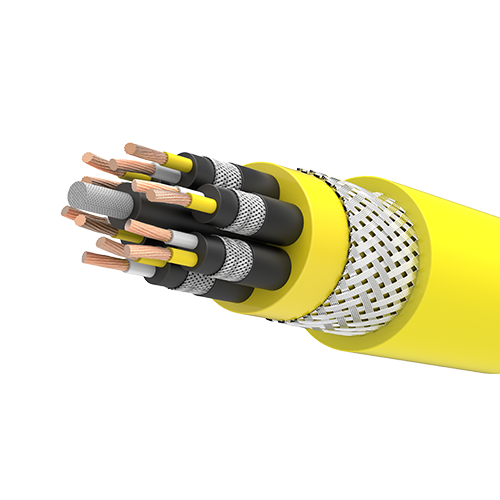

Product Overview
Heavy-duty crane pendant cables represent a specialized category of electrical cables engineered specifically for ship unloader and crane festoon systems. These cables serve as the vital link between stationary power sources and moving crane components, delivering both power and control signals through continuously flexing connections.
The primary applications include ship-to-shore gantry cranes, container handling equipment, bulk material unloaders, and various marine loading systems found in modern port terminals. Unlike standard industrial cables, these pendant cables must accommodate the unique motion patterns of festoon tracks, including horizontal travel, vertical lifting, and rotational movements that occur during typical crane operations.
In ship unloader applications, these cables typically run along festoon tracks that follow the crane's movement pattern, ensuring that power and control signals reach all necessary components regardless of the crane's position. The cable's design must account for the continuous flexing motion while maintaining electrical integrity and mechanical durability over extended operational periods.
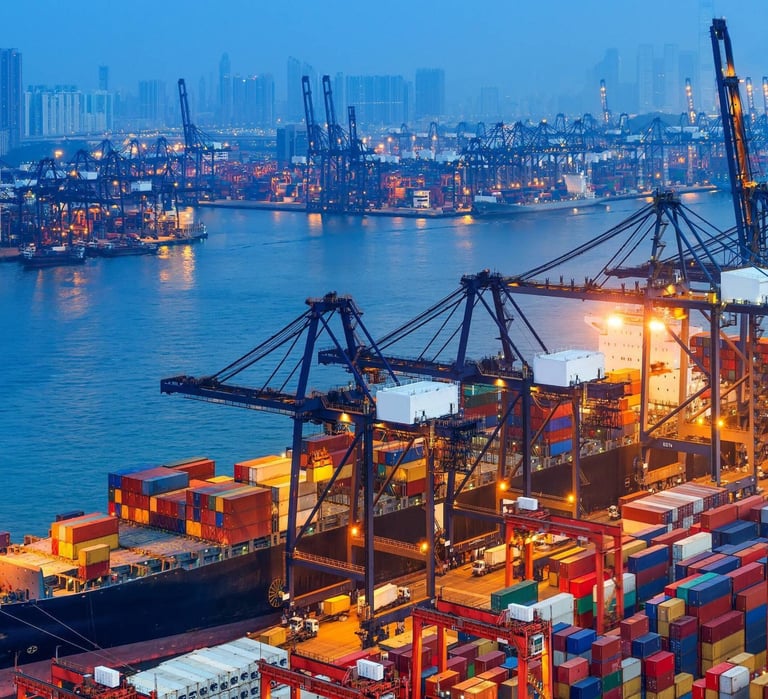

Key Features of the Crane Pendant Cable
The UV-resistant outer sheath represents one of the most critical features of marine-grade crane pendant cables. Port environments expose cables to intense solar radiation, particularly in tropical and subtropical regions where UV degradation can rapidly compromise standard cable materials. The specialized outer sheath formulation provides long-term protection against UV-induced cracking and degradation, ensuring reliable performance throughout the cable's service life.
Heavy-duty construction with reinforced insulation addresses the mechanical stresses encountered in festoon applications. The cable structure incorporates multiple protective layers, including reinforced conductor insulation and intermediate sheathing that protects against abrasion, crushing, and penetration from external objects. This multi-layer approach ensures that even if the outer sheath experiences minor damage, the internal conductors remain protected and functional.
Oil, weather, and abrasion resistance capabilities enable these cables to withstand the harsh industrial environment of port operations. Hydraulic fluid leaks, diesel fuel exposure, and various industrial chemicals are common in port environments. The specialized compound formulations resist chemical attack while maintaining flexibility and electrical properties. Weather resistance extends beyond UV protection to include resistance to ozone, temperature cycling, and moisture ingress.
High flexibility for festoon track movement represents perhaps the most demanding requirement for these specialized cables. The cable construction must accommodate millions of flex cycles while maintaining electrical continuity and mechanical integrity. This requires careful selection of conductor stranding patterns, insulation materials, and overall cable geometry to minimize stress concentrations during flexing.
Multi-core configurations accommodate both power and control functions within a single cable assembly. Modern ship unloaders require numerous control circuits for position feedback, safety systems, communication, and auxiliary equipment. By integrating these functions into a single pendant cable, system complexity is reduced while improving reliability and maintenance efficiency.
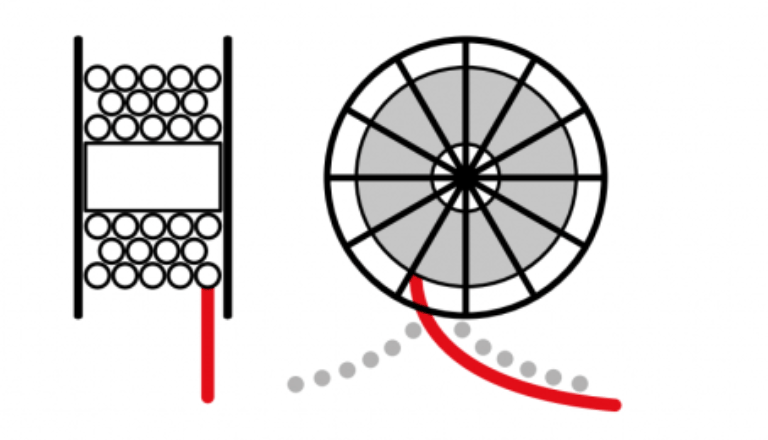

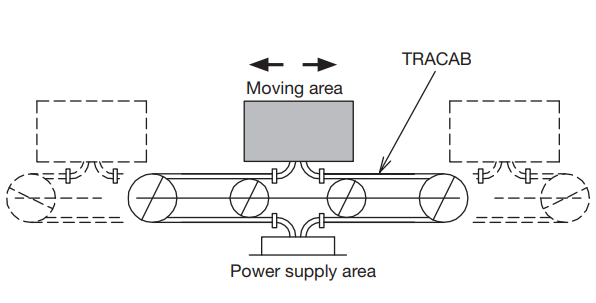

Technical Specifications
Voltage ratings for crane pendant cables typically range from 300/500V for control circuits to 0.6/1kV for power applications. The specific voltage rating depends on the crane's electrical system requirements and applicable safety standards. Higher voltage ratings may be available for specialized applications, though most port crane systems operate within these standard ranges.
Conductor material consists of fine stranded copper wire designed for maximum flexibility and conductivity. The stranding pattern uses Class 5 or Class 6 conductors as defined by IEC standards, providing the flexibility necessary for continuous flexing applications while maintaining low electrical resistance. Some applications may specify tinned copper conductors for enhanced corrosion resistance in marine environments.
Insulation materials vary depending on application requirements and environmental conditions. Thermoplastic elastomer (TPE) provides excellent flexibility and chemical resistance, making it suitable for moderate temperature applications. Polyvinyl chloride (PVC) offers cost-effective performance for standard applications, while polyurethane (PUR) provides superior abrasion resistance and low-temperature flexibility for demanding environments.
The outer sheath typically employs UV- and oil-resistant PVC or PUR compounds specifically formulated for marine applications. These materials maintain their properties over extended exposure to sunlight, salt spray, and industrial chemicals commonly found in port environments. The sheath thickness is optimized to provide adequate protection while maintaining cable flexibility.
Temperature ratings typically span from -40°C to +90°C, depending on the specific insulation and sheath materials selected. This wide temperature range accommodates the varying climatic conditions found in global port operations, from arctic ports to tropical facilities. The temperature rating affects both the cable's electrical performance and mechanical properties.
Minimum bending radius specifications ensure proper installation and operation without damaging the cable. For dynamic applications, the minimum bending radius is typically 7.5 times the cable's outer diameter, though this may vary based on specific construction details and application requirements.

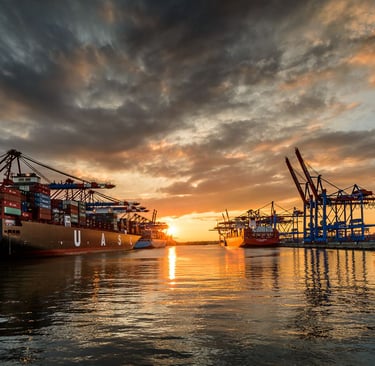
Application Scenarios
Ship unloaders and gantry cranes in port terminals represent the primary application for these specialized pendant cables. Container terminals rely on ship-to-shore gantry cranes that must traverse hundreds of meters along the dock while maintaining continuous electrical connections. The festoon system follows the crane's movement, with pendant cables providing the flexible connection between the fixed electrical supply and the moving crane components.
Festoon cable systems in container yards extend beyond ship-to-shore applications to include rubber-tired gantry cranes and rail-mounted gantry cranes. These systems handle container stacking and yard operations, requiring reliable electrical connections for crane positioning, container handling equipment, and safety systems. The pendant cables must accommodate both horizontal and vertical crane movements while maintaining electrical integrity.
Material handling systems in marine terminals encompass a wide range of specialized equipment, including bulk material handlers, conveyor systems, and automated guided vehicles. Each application presents unique challenges for pendant cable design, requiring customized solutions that address specific movement patterns and environmental conditions.
Indoor and outdoor cranes exposed to sun, salt spray, and mechanical stress represent some of the most demanding applications for pendant cables. Outdoor installations face the full range of environmental challenges, including UV radiation, temperature cycling, precipitation, and airborne contaminants. Salt spray creates particularly corrosive conditions that can rapidly degrade inadequately protected cables.
Advantages Over Standard Control Cables
The design optimization for moving festoon tracks sets crane pendant cables apart from standard control cables. Standard cables are designed for static installations or limited flexing applications, making them unsuitable for the continuous motion encountered in crane operations. Pendant cables incorporate specialized construction techniques that accommodate millions of flex cycles without degradation.
Extended lifespan due to abrasion and UV protection translates to significant cost savings over the cable's operational life. While the initial cost of specialized pendant cables may exceed that of standard cables, the extended service life and reduced maintenance requirements result in lower total cost of ownership. This is particularly important in port operations where downtime carries substantial economic penalties.
Torsion and vibration-resistant design addresses the complex stress patterns encountered in crane applications. Crane movement involves not only simple flexing but also twisting, vibration, and shock loading from cargo handling operations. The cable construction incorporates features that distribute these stresses throughout the cable structure, preventing localized damage that could lead to premature failure.
Lower downtime and fewer replacements in high-cycle usage environments provide operational benefits that extend beyond simple cost considerations. Port operations typically run continuously, making scheduled maintenance windows limited and costly. Reliable pendant cables reduce the frequency of emergency repairs and allow maintenance activities to be scheduled during planned downtime periods.
Certifications and Compliance
Compliance with VDE 0250, CE, and RoHS standards ensures that crane pendant cables meet international safety and environmental requirements. VDE 0250 specifically addresses flexible cables and provides detailed specifications for construction, testing, and performance requirements. CE marking indicates compliance with European safety directives, while RoHS compliance ensures that hazardous substances are minimized in cable construction.
Flame-retardant, low-smoke, and halogen-free options address fire safety requirements in enclosed spaces and environmentally sensitive applications. Port facilities often include enclosed structures where fire safety is paramount, requiring cables that will not contribute to fire spread or generate toxic gases during combustion. These specialized formulations maintain electrical and mechanical performance while meeting stringent fire safety standards.
Additional certifications may include marine classification society approvals for shipboard installations, UL listings for North American markets, and various national standards depending on the specific application and geographic location. The certification requirements should be specified during the cable selection process to ensure compliance with all applicable standards.
Customization Options
Core configurations range from simple three-core power cables to complex multi-core assemblies with 30 or more conductors. The specific configuration depends on the crane's electrical requirements, including power circuits, control systems, communication networks, and safety systems. Custom core arrangements can accommodate specific voltage levels, current carrying capacity, and signal types within a single cable assembly.
Optional color-coded or numbered conductors simplify installation and maintenance procedures. Consistent color coding throughout the electrical system reduces the possibility of wiring errors during installation and facilitates troubleshooting during maintenance activities. Numbered conductors provide an alternative identification method when color coding is insufficient for complex multi-core cables.
Custom cut lengths accommodate specific installation requirements without the waste associated with standard cable lengths. Port crane installations often require precise cable lengths to optimize festoon system performance and minimize excess cable that could interfere with crane operations. Custom cutting also ensures that cable joints are located in accessible areas for maintenance.
Tinned copper conductors provide enhanced corrosion resistance for particularly aggressive marine environments. While bare copper provides excellent electrical performance, tinned copper offers additional protection against corrosion in high-salt environments or applications with extended service life requirements. The tin coating maintains electrical performance while providing a barrier against corrosive attack.
Why Choose FeiChun for Marine Crane Cables
Decades of experience in industrial cable manufacturing provide the foundation for delivering reliable pendant cable solutions. This experience encompasses not only cable manufacturing techniques but also understanding of the unique requirements and challenges faced by port operators. The accumulated knowledge enables the development of cable designs that address real-world operational issues encountered in marine environments.
Specialized focus on port and crane applications ensures that product development efforts are directed toward meeting the specific needs of this demanding market segment. Rather than offering generic cable solutions, this specialization results in products that are optimized for the unique requirements of crane and festoon applications.
Short lead times and global shipping support address the operational realities of port operations where equipment downtime carries significant economic penalties. The ability to quickly deliver replacement cables or support expansion projects helps minimize operational disruptions and supports efficient port operations.
Technical support for customized festoon system designs provides value beyond simple cable supply. Port operators often require assistance with cable selection, installation procedures, and system optimization. This technical support helps ensure that the pendant cable installation achieves optimal performance and service life.
Common Questions and Solutions
Question: How do I determine the appropriate bending radius for my festoon application?
The minimum bending radius depends on several factors, including cable construction, conductor size, and application requirements. For dynamic applications, the general rule is 7.5 times the cable outer diameter, but this should be verified with the manufacturer based on your specific installation requirements. Exceeding the minimum bending radius will extend cable life, while operating below this limit can cause premature failure.
Question: What causes premature cable failure in festoon systems?
Common causes include inadequate bending radius, improper cable support, contamination from hydraulic fluids or other chemicals, UV degradation from inadequate sheath protection, and mechanical damage from contact with crane structures. Proper cable selection, installation practices, and regular inspection can prevent most premature failures.
Question: Can standard industrial cables be used in festoon applications?
Standard industrial cables are not suitable for continuous flexing applications found in festoon systems. They lack the specialized construction features necessary to withstand millions of flex cycles and will fail prematurely when used in these applications. Always specify cables designed specifically for festoon and pendant cable applications.
Question: How often should festoon cables be inspected?
Inspection frequency depends on operating conditions and usage intensity, but monthly visual inspections are typically recommended for high-usage applications. Look for signs of outer sheath damage, unusual wear patterns, or changes in cable flexibility. More detailed electrical testing should be performed annually or as recommended by the cable manufacturer.
Conclusion
Heavy-duty crane pendant cables represent a critical component in modern port operations, enabling reliable power delivery to ship unloaders and crane systems operating in demanding marine environments. The specialized design features, including UV resistance, mechanical durability, and high flexibility, ensure optimal performance throughout extended service life.
Proper cable selection, considering factors such as environmental conditions, mechanical requirements, and electrical specifications, is essential for achieving reliable operation and minimizing total cost of ownership. Working with experienced cable manufacturers who understand the unique requirements of port and crane applications ensures that the selected cable will meet performance expectations and provide years of reliable service.
For technical specifications, custom configurations, or application-specific recommendations, contact FeiChun's technical support team to discuss your specific requirements and receive detailed product information tailored to your application needs.
How to Reach Us
Get in Touch
SiteMap
Product Catalogue
Reeling Cable
Festoon Cable
Shore Power Cable




Scan to add us on WeChat
